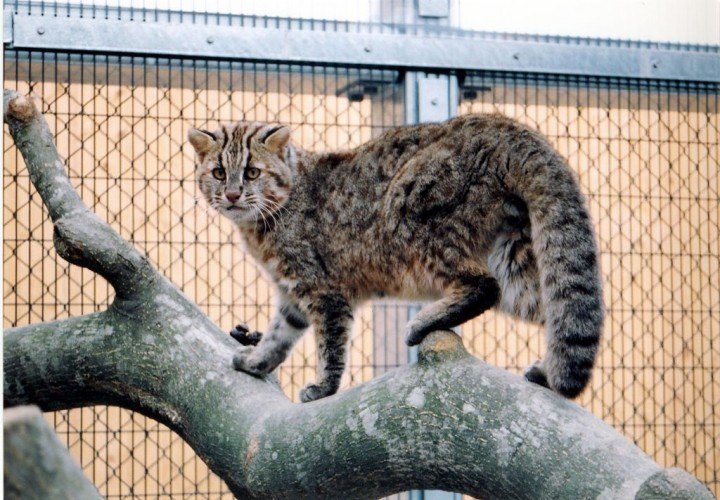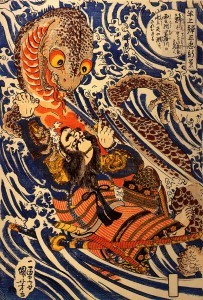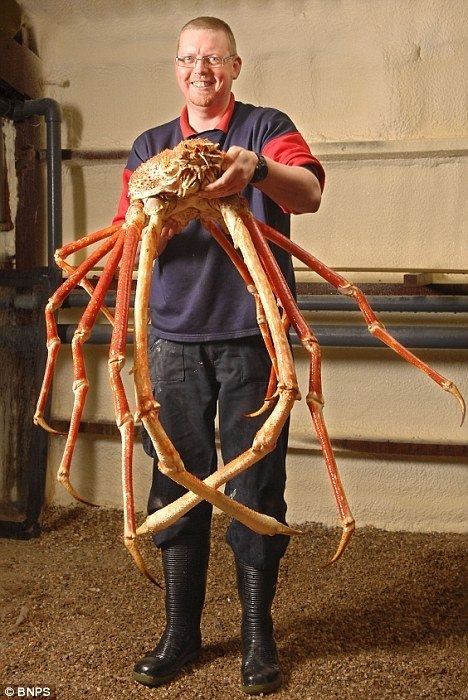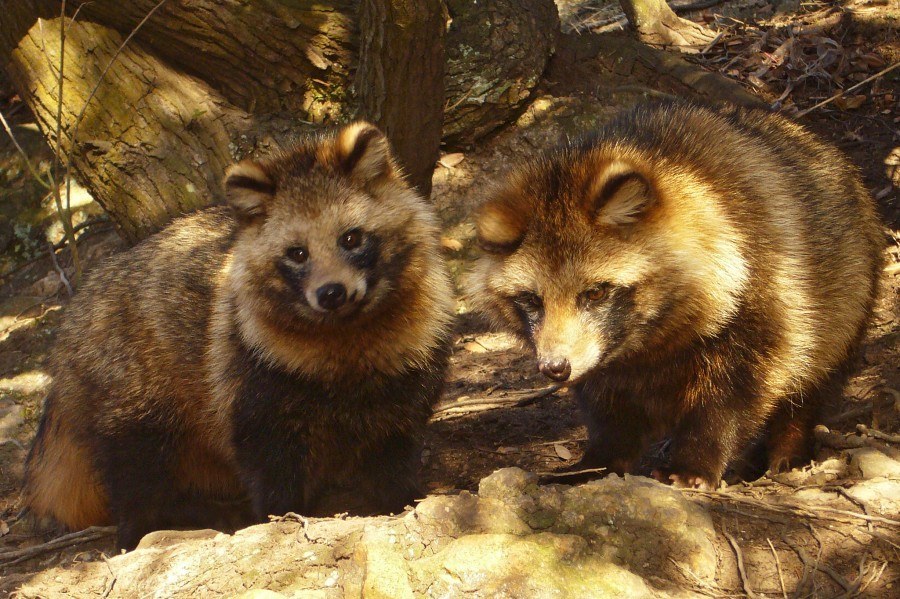Like this post? Help us by sharing it!
The Japanese archipelago straddles a wide range of climates, from the subarctic snowscapes of northern Hokkaido to the subtropical jungles of Okinawa in the south, and over 70% of its land mass is mountainous and undeveloped. Thanks to these conditions, Japan is home to a more interesting host of fauna and animals than you might think.
The following are Japan’s most fascinating birds and beasts (according to me), and where to find them.
Where to find Japan’s 10 coolest animals
The Japanese Macaque

The Japanese Macaque, or “snow monkey” as they are often known, is probably Japan’s most famous furry resident, and the world’s northernmost-living primate (besides humans).
Monkeys may be pretty exciting for those of us who live in monkeyless parts of the world, but macaques are actually a very familiar sight in Japan. You certainly won’t have to hunt very hard to find them!
Considering their prevalence it’s hardly surprising that monkeys feature quite prominently in traditional Japanese culture and religion – appearing as the protagonists in numerous folk tales, paintings, carvings, prints and so on. Perhaps the most famous Japanese monkeys are the “three wise monkeys” to be found in a carving at Toshogu Shrine in Nikko, warning all comers to “see no evil, hear no evil, speak no evil”.

Where to see them: The monkeys of Jigokudani in Yudanaka Onsen are particularly famous for bathing in the hot spring waters to keep warm, but you can also spot macaques in most mountainous parts of Japan where human development is minimal.
Deer

Far from being shy and difficult to spot, the sika deer is so common in Japan today as to be overabundant. If you pay a visit to either Nara or Miyajima, you’ll find deer seemingly almost as populous as people, and tame enough to stroke. In Nara, where a herd of over 1,000 deer roam the streets freely, you can even buy special crackers (called ‘shika senbei’) to feed them.

According to the Shinto religion, deer are considered messengers of the gods and are thus sacred – killing one of these deer was punishable by death until 1637. After WWII the deer were officially stripped of their “sacred” status (who knew that was possible?) and designated as a national treasure instead.
Where to see them: Whilst you are most likely to see shika deer in Miyajima and Nara, you can also spot them in numerous other locations in Japan – from northern Hokkaido to the forests of Yakushima, and can even be found swimming between the Kerama Islands of Okinawa!
Racoon dog (Tanuki)

You have probably never heard of a tanuki, but if you go to Japan you’re guaranteed to see hundreds of them. Well, sort of.
The tanuki is a kind of raccoon dog (which, confusingly, is not closely related to a raccoon) native to Japan, and has featured prominently in folklore since folklore began. In legend, the tanuki is a master of shapeshifting –typically mischievous and jolly, but also absentminded and gullible.

In Japan today, tanuki statues are ubiquitous – standing outside shops, restaurants, izakaya pubs and other establishments to bring luck and prosperity to the business. The tanuki has eight special traits to look out for, including a hat to protect against trouble or bad weather, a sake bottle, a big belly and (of course) a giant scrotum.
Tanuki statues traditionally have giant b?$%!*ks to symbolise prosperity and good fortune. If you really want to know why, some of the history is explained by Alice Gordenker of the Japan Times here.

If you’re a Ghibli fan, you may even have seen the film Pom Poko – where a tanuki use their shape-shifting abilities (and gigantic scrotums) to protect their community from human developers. It’s a very strange film. In the English dub, the scrotums are called ‘pouches’ – but don’t let that fool you.
Real tanuki have proportionately average balls, have strong social bonds and live in monogamous pairs, which is just lovely. They even cuddle up together when they hibernate!
Where to see them: Tanuki live all over Japan, sometimes even in urban areas. There are even rare white Tanuki in Miyajima which you may see scuttling around. If you don’t spot a real tanuki, you will most certainly notice their statues everywhere you go in Japan!
Leopard Cats

Japan is home to two critically endangered subspecies of leopard cat – a kind of wild cat roughly the size of a domestic cat, distinguishable by its leopard-like spots and distinctive facial markings. They may look similar to your ordinary house cat, but in actual fact these species diverged hundreds of thousands of years ago.
The Iriomote cat is found exclusively on Iriomote Island, where there are fewer than 250 of them left. With only 290 square kilometres to call home, they also have the smallest natural habitat of any wild cat.

Tsushima Island, off the coast of Kyushu, also harbours a population of endemic leopard cats – the Tsushima leopard cat. With only 80 to 100 left, these are even more endangered than the Iriomote cat.
Where to see them: Even if you do visit one of these two locations, you’re very unlikely to spot either cat as they are rare and predominantly nocturnal – but you will see signs warning you to watch out for them on the roads, so you never know!

If you still have a hankering to see cats, you can visit one of Japan’s notorious “cat islands”, Tashirojima and Aoshima. These island cats certainly aren’t endangered – in fact, due to the local belief that feeding cats will bring prosperity, they’re absolutely rampant. These are feral cats, not wild cats, and the islands (especially Tashirojima) have become an unexpected tourist attraction because of them. You can even stay in a cat-shaped house if you come to visit! Read more about it here.
Red-crowned cranes

Hokkaido is Japan’s second-largest island and one of its wildest areas; sparsely populated and characterised by sweeping mountain ranges, bubbling volcanic hot springs and wide open plains. It is here, during the winter months, that you are in with a chance of spotting the rare tancho, or red-crowned crane, as it performs its distinctive mating dance – a graceful and seemingly choreographed ritual that never fails to impress visitors.
The tancho was thought to be extinct in Japan until 1926, when a group of around 20 birds was found living near Tsurui in Hokkaido. Thanks to conservation efforts they have since made a dramatic recovery and now number around a thousand birds.
In Japanese folklore, the cranes are said to grant favours in return for acts of sacrifice, and are thought to live for 1,000 years.
Where to see them: Tsurui, Hokkaido. Our Winter Highlights tour visits the crane sanctuaries, or you can contact us to add a special visit to a fully tailored trip.
Sea turtles

Further south is another amazing opportunity to see wildlife in action. Yakushima, the densely forested island that inspired Hayao Miyazaki’s Princess Mononoke, is one of only a few places in the world to provide a spawning ground for Loggerhead and Green sea turtles.
Under the supervision of local conservationists, visitors to Yakushima can watch as the turtles come to lay their eggs, or even see the tiny baby turtles as they hatch and make their way down to the sea. This is a truly incredible event to witness, and especially amazing when you consider that each hatchling only has a 1/5,000 chance of surviving long enough to produce their own young.
Where to see them: Yakushima has a number of beaches that are good for turtle-watching, and you can take turtle tours throughout the summer. You can also swim with sea turtles whilst diving or snorkelling around the Okinawa Islands – as pictured!
Pika

The pika is a tiny mammal akin related to rabbits and hares, with short limbs, round ears and no tail. It’s also known as the “whistling hare” due to its high-pitched alarm call and lives in cold climates across the world.
Some sources have suggested that the pika was the inspiration for the famous Japanese icon Pikachu, but according to series producer Satoshi Tajiri, the name actually comes from a combination of two onomatopoeic Japanese words: “pika”, the sound an electric spark makes, and “chu”, the sound a mouse makes. Boo.
Where to see them: Like many of the other animals on this list, you probably won’t see a pika in the wild as they’re pretty shy and only come out at dusk and dawn.
Japanese giant hornets vs. Japanese bees

This next entry is a creepy crawly you certainly won’t want to spot on your travels. Japan is home to the world’s largest hornet, the Japanese giant hornet – which is known as the “giant sparrow bee” in Japanese. This behemoth can reach more than 4.5cm (1.8in) in length, with a wingspan greater than 6cm (2.4in). These hornets are so terrifyingly huge and evil that they even eat other bees – a single hornet can kill 40 European bees in a minute. Oh and they also kill more people in Japan than any other animal.
So the giant hornet is pretty scary, but in my opinion the humble Japanese bee is much, much more awesome. To prevent giant hornets from attacking them like the poor European bees, they have devised an incredible defence – the bee ball.


When a scout hornet approaches their hive ready to tell all his hornet friends to come round for lunch, the bee workers will retreat into the hive, leaving a hole large enough for the hornet scout to enter. Once the hornet is inside, the bees come out of their hiding places in a swarm and form a tight ball around the hornet, vibrating their wings to direct warm air over their bodies and into the centre of the ball. The effect is similar to a convection oven, and the invader is cooked alive while the bees survive.
You might think that this is kind of twisted, but I think it is really and truly amazing. Read more about it on the National Geographic if you dare.
Where to see them: Yeah… I’d say don’t go looking. They are mainly found in rural areas and you’re very unlikely to come across one on your holiday!
Giant Salamander

It may look like it belongs in Jurassic Park, but this massive freshwater-dwelling beast is alive and well in the streams of Japan today. In Japanese it is called the “giant pepper fish” (due to the milky substance they excrete when threatened, which smells like pepper).
Japanese giant salamanders can reach a whopping 1.5m (5ft) in length, and are surpassed in size only by the Chinese giant salamander, a close relative (these monsters can reach a length of 1.8m (5.9ft), which really is enough to terrify anyone). Feeding on insects, frogs and fish, and lacking any natural competitors or predators, the salamander can live to a ripe old age of around 80 years.
Where to see them: You’re unlikely to spot one of these on your travels as they tend to hide out in streams, but occasionally they can stray into urban waterways and even crawl out of the water – as one Japanese schoolboy found out near Kyoto earlier this year! (They are harmless to humans, so there’s no need to panic if this does happen to you.)

Spider crab

Finally, we come to the spider crab, the world’s largest arthropod and undeniably the most lovable animal on this list. Which is hardly surprising, given that it is a combination between the world’s cuddliest critters: the spider and the crab.
It lives in the waters around Japan, can weigh up to 19kg (42lb) and its leg span can reach up to 3.8m (12ft). Somewhat adorably, Wikipedia claims that “it is reported to have a gentle disposition, despite its ferocious appearance”. Nawwww.
Where to see them: You are unlikely to spot any of these friendly fellows even if you are a diving nut, as the shallowest depth at which they can be found is around 50m (150ft) – but you can see them at any one of Japan’s excellent aquariums. We especially recommend Osaka Aquarium!






